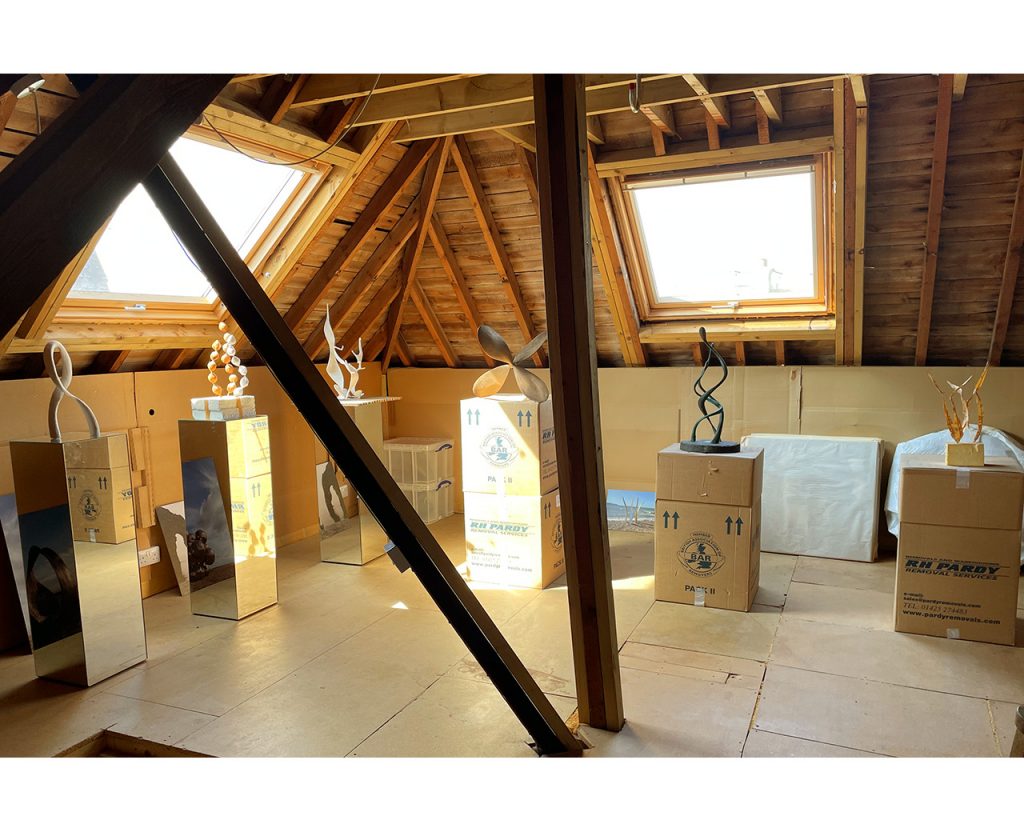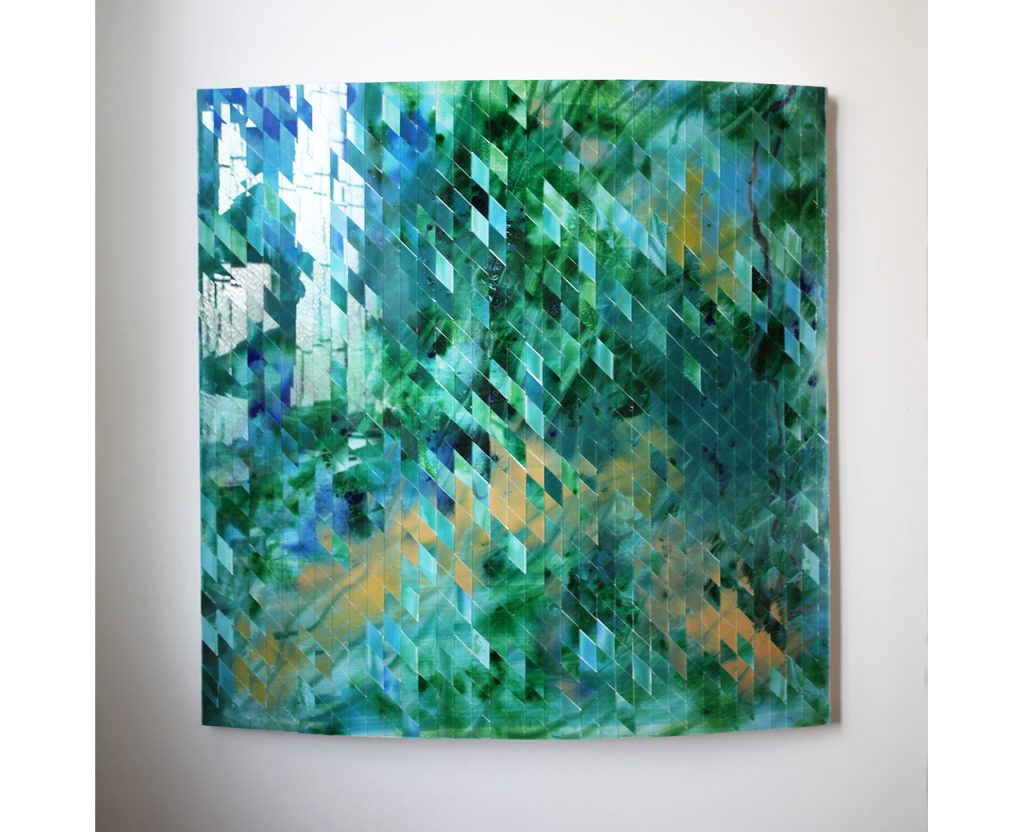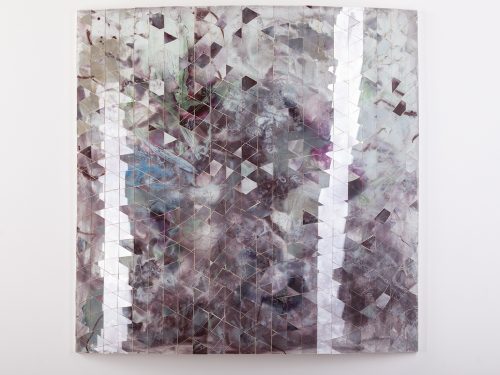Insider Snapshot into 2022: Unpacking the Archive
Unpacking my archive 2022 – an opportunity to share a quick overview of my work to date

Currently, I am engaged in research for a new chapter of work. In doing so, I unpacked a part of my archive to best understand my linear progression to date and provide context to new developments.
Archive of the Natural World

The new work embraces trees, lichen, and moss. Lichen is symbiotic, it is both fungi and algae and these 2 kingdoms of life have a mutually beneficial relationship. Symbiosis is an idea which resonates in these post-pandemic days and reminds me that it is still possible to address climate change and be more in balance with the natural world. Lichen is abundant and thrives in unpolluted environments and can be considered a barometer of clean air. There are many types of lichen, and I am currently focusing on the folios, or the more leaf-like forms, as this has coherence to previous work.
My work is a journey from an exploration of the botanical world, through to abstract expressions of the experience of the natural world.


This journey starts with concepts of organic growth, and plant classification. Reed and Reed II are monocot forms, where a single shoot emerges from a seed. Seedlings are about the dicot group, where the seed germinates and two perfect and opposing leaves emerge. They were created for the Mackintosh Museum in Northampton as part of the Museumaker program, by ACE. Seedlings we also inspired by Mackintosh’s symbolic and stylised representations of plants. Lotus is also a Museumaker commission, for New Walk Museum in Leicester, and considered the lotus as representative of the diverse natural and cultural collections of the museum. Shoot is a sculpture about the fast growth that can be observed in spring. I explored seed dispersal, by wind or water, resulting in a series of suspended pieces, such as Exine, Wheel, Calthus, and then more suspended works which considered pollen, such as Rocket.

A residency at the Hillier Gardens in 2008, allowed the development of Quercus, Ginkgo, which explored botanical proportion, and Buckyball, Nanocrystals which delved into microscopic biological characteristics which I was becoming increasingly fascinated by.

These were followed by Samara, which is about helical flight, and then Magnolia, a floating sculpture commissioned for the Himalayan Gardens, which reflects their ericaceous plant collections.
Kinetic Sculpture Archive

Fledge Increments of Flight was shown in Salisbury Cathedral as part of Liminality, the first show in the Cathedral curated by Jacquiline Creswell, and reflects a liminal journey, from one place of consciousness to another. The 4 wing-like forms are symbolic of stages in winged flight, rotate on concealed bearings and were positioned around William Pye’s font.

Next are the Soar sculptures. One was cast in bronze and the others were made, not with the now typical glass skin, but incorporated imploded glass in place of sand and stone aggregate, a material that I developed with the help of Chryso, a French Concrete additive company. The Soar sculptures relate to Fledge Increments of Flight and are symmetrical reflections of the form, creating endless curves, which rock in response to touch. Launch is the concluding part of this series and is about latent energy required for elevation.

Occasionally the work leaps ahead, and when that happens, I have learnt to allow it, knowing that it will all make sense in time! Wave was one of those leaps, it’s about waves of communication which increasingly and invisibly surrounds us. It is a floating installation commissioned for the Himalayan Gardens. The installation is red to reflect the sine wavelength of the colour red and energy.
Sound and Sculpture Archive


The Sound Parabolas were first shown in Reflection at Salisbury cathedral and are, in section, a pair of parabolic curves. They reference emanating sound waves, play with the idea of sound travelling unhindered within the stone cathedral interior space, and a whispering gallery where the acoustics are focused and silenced within a short distance. Their faceted glass interior and exterior surfaces reflect their surroundings like pixelated images, integrating and scrambling simultaneously.

The Parabolas developed into the Vermeer series of wall panels. The title explores the curve, focus and optical qualities of the lens which Vermeer used in his paintings. Typically, glass is painted with glass enamels in response to experience, which is fired and cut into shapes, and then applied to a timber frame. The resulting faceted curved glass surface simultaneously immerses the abstracted image with reflected surroundings. To date, there are 50 works in this series and 30 of them, the Oceania series, were created following a trip to Tokyo and Auckland ahead of the pandemic.

The Rise series appeared simultaneously with the Vermeer series and are symmetrical, rhythmical, upright works about waves ascending skywards. Some rotate to accommodate the wind ergo rather than obstruct the path of the natural environment, wind can turn the sculpture to offer the least resistance

Then Surge was commissioned for Talbot Heath School. It is a 4m tall expression of how matter moves, intended to encompass the ideals of STEAM education, with Art at the heart of the curriculum, along with science, technology, engineering, and maths. The sculpture focuses on fluid dynamics and incorporates mist making units in the base.
Aeolian and Aeolian 2 are suspended sculptural commissioned works which dispense with a dense structure but draw with curved glass forms in the space above your head to suggest the path of the wind and the rhythmic waves of the sea, here in Southbourne.
The Vermeer series continues to expand and develop.

The narrative journey of the sculptures made in the last 3 decades started with seed germination and explored aspects of natural regeneration and growth in a life cycle. It developed to consider the journey itself in the Fledge Increments of Flight series and then progressed to include the conditions which allow this reproduction to come about, by looking at how matter moves in this natural world, with Wave, the Rise series, and the Vermeer series.
Next, by bringing trees and lichen into the frame at this time, I am processing and unifying the narrative strands to date, and future work will begin by knitting narrative loops together.
Related Posts

Artists talk transcript- Brook, Marsh, Moss
A solo show at The Vanner Gallery https://youtu.be/Q2SCq6OOCo8 3.5.24 - 8.6.24 Artists talk...

Brook, Marsh, Moss
A solo show at The Vanner Gallery 3.5.24 - 8.6.24 Brook, Marsh, Moss considers the places where...



